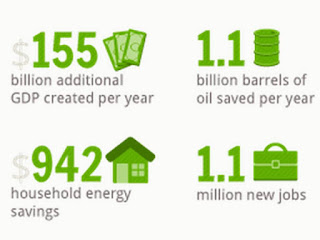Solar Power - we know the sun provides more energy every second than we need to power this planet with electricity if we'd installed solar panels. But even though much solar has and is being installed the wide spread adoption is still somewhat slow. Could added storage help? The idea is simple: peak solar production doe not coincide with peak electricity demand. Thus, when cost of electricity is highest you get the most $ for your solar energy. Thus the solution - store it for some few hours and release it during peak times.
The E2 conference next month in the Netherlands looks into these topics, and I shall contribute with a talk during thisconference. Here's a link to the topics discussed at that meeting.
Does Congress get a passing grade on Science?
The question is, how does the US congress views scientific topics like renewable energy and climate change? Scientific American recently asked 32 congressmen and women to respond to 8 selected science questions. The answeres are interesting and encouraging at once. Nine out of the 17 respondance acknowledged climate change which is uplifting. Other science related topics were brought up by the congressmen on the security of the internet, aka cybersecurity. This is a field that need much attention as communication and transaction pathways are virtually to 100% conducted via the web.
Continuing on this notion, and timely to the upcoming US elections, here is the link the respondance of "Top American Science Questions" from President Obama and Sen. Romney. Without going into too much detail the difference are quite obvious. The current administration did a tremendous effort in supporting science and engineering especially in the energy, water, and .... So how about economy? Well, Mitt Romneys biggest critique on the current administration is their apparent failure to grow the economy. The problem of many political leaders is that they sadly have a path for 4 years max, i.e. when elections are due. Obama however did plant seeds for a much bigger and larger project. He indeed presented a vision of a clean and US energy independent future. This forward thinking and long-term planning and preparing of the US polulation for the challenges of the 21st century is what makes true leaders stand out. And to the Mitt's economy point;
- #1 when the Obama administration tool over the economy was down with 800,000 jobs lost every month from mis-leadership during the Bush years
- #2 the world saw the largest economical crises since the balck friday in 1929
- #3 the economy is already on a good way to recover
- #4 the long-term payoffs from stimmulation packets in Science, Engineering, clean energy, water, education WILL pay off in the mid-to long term - that's economics 101
















